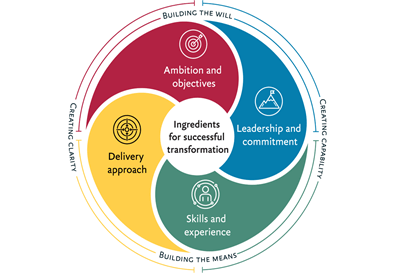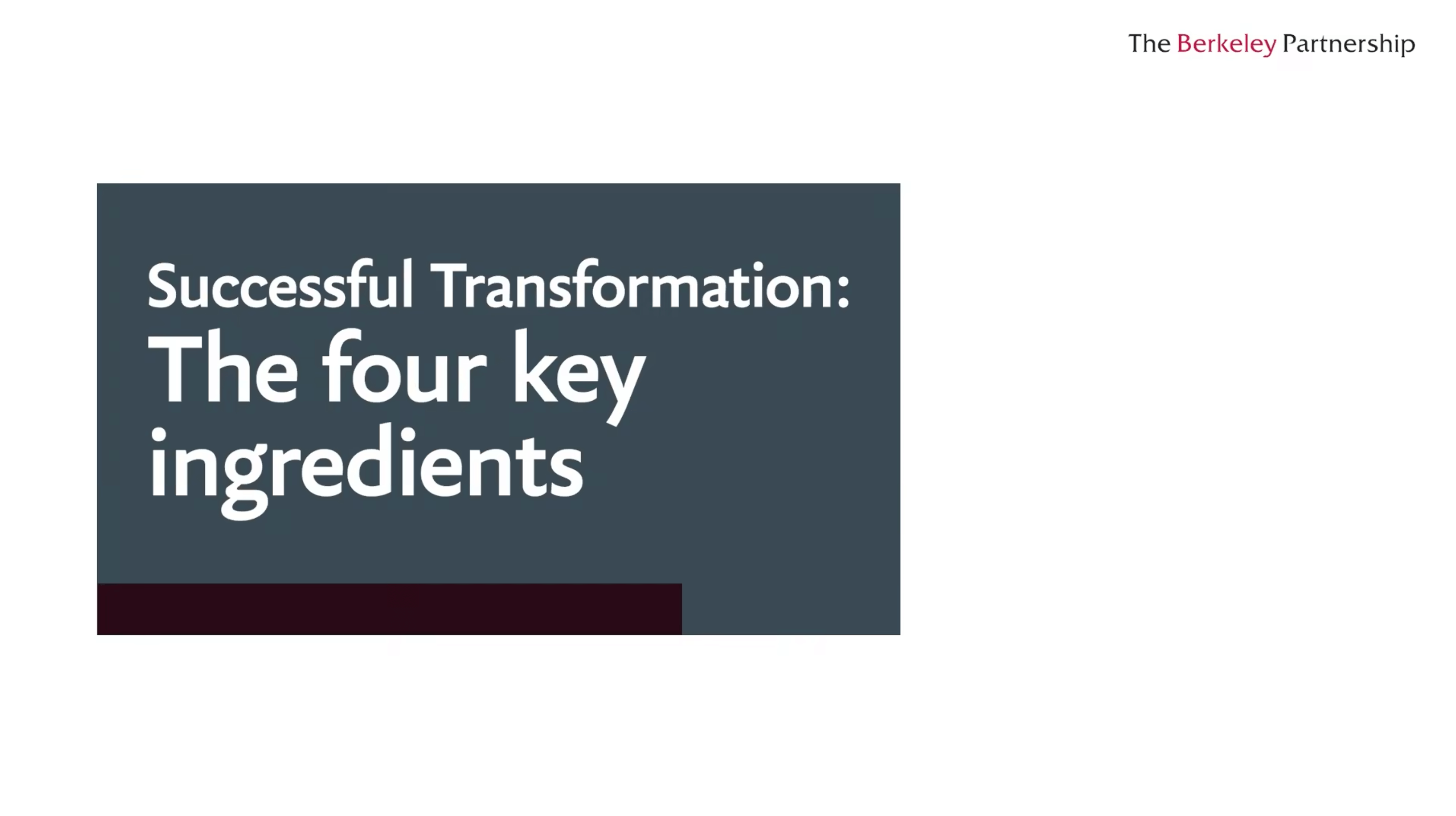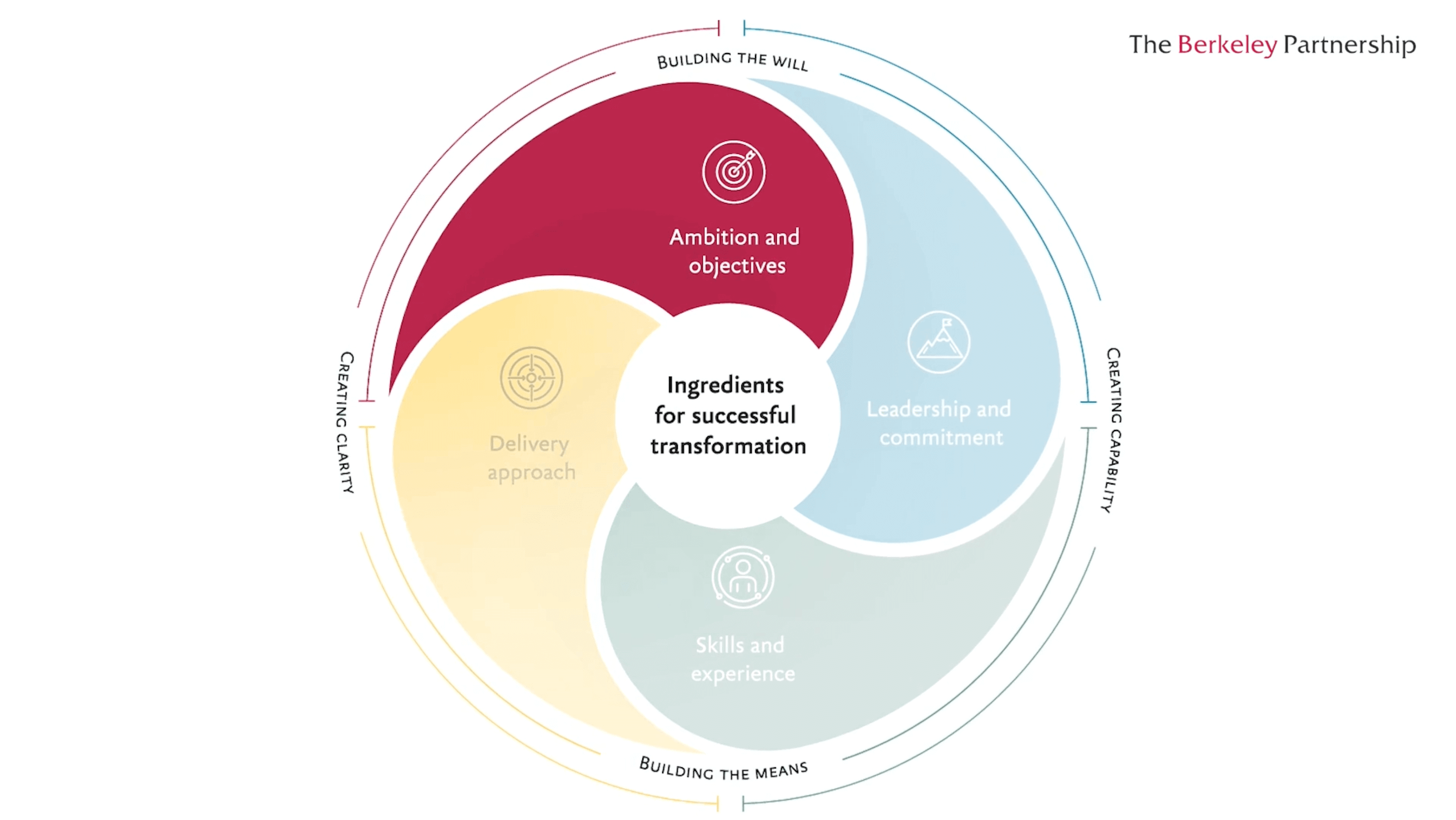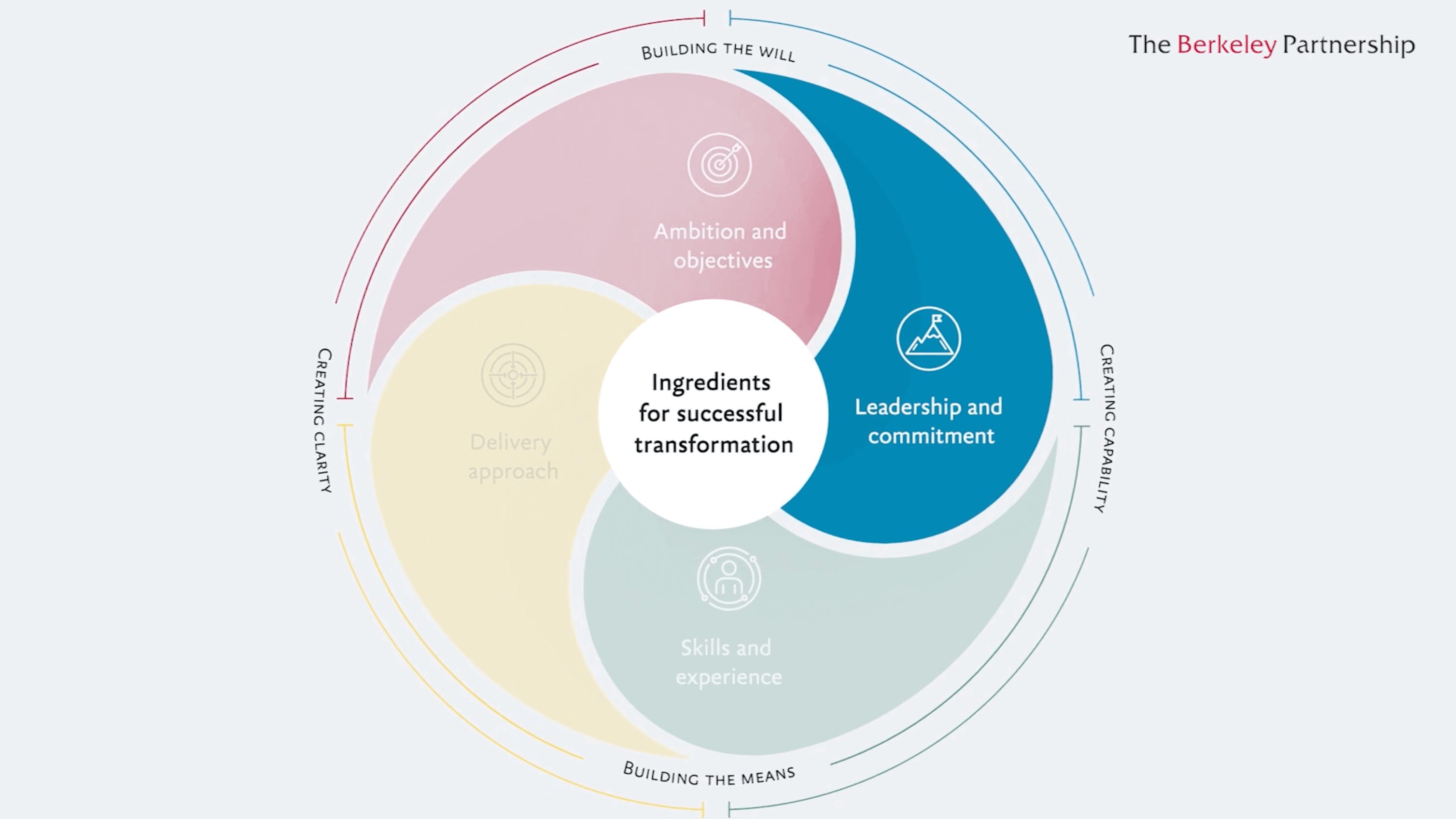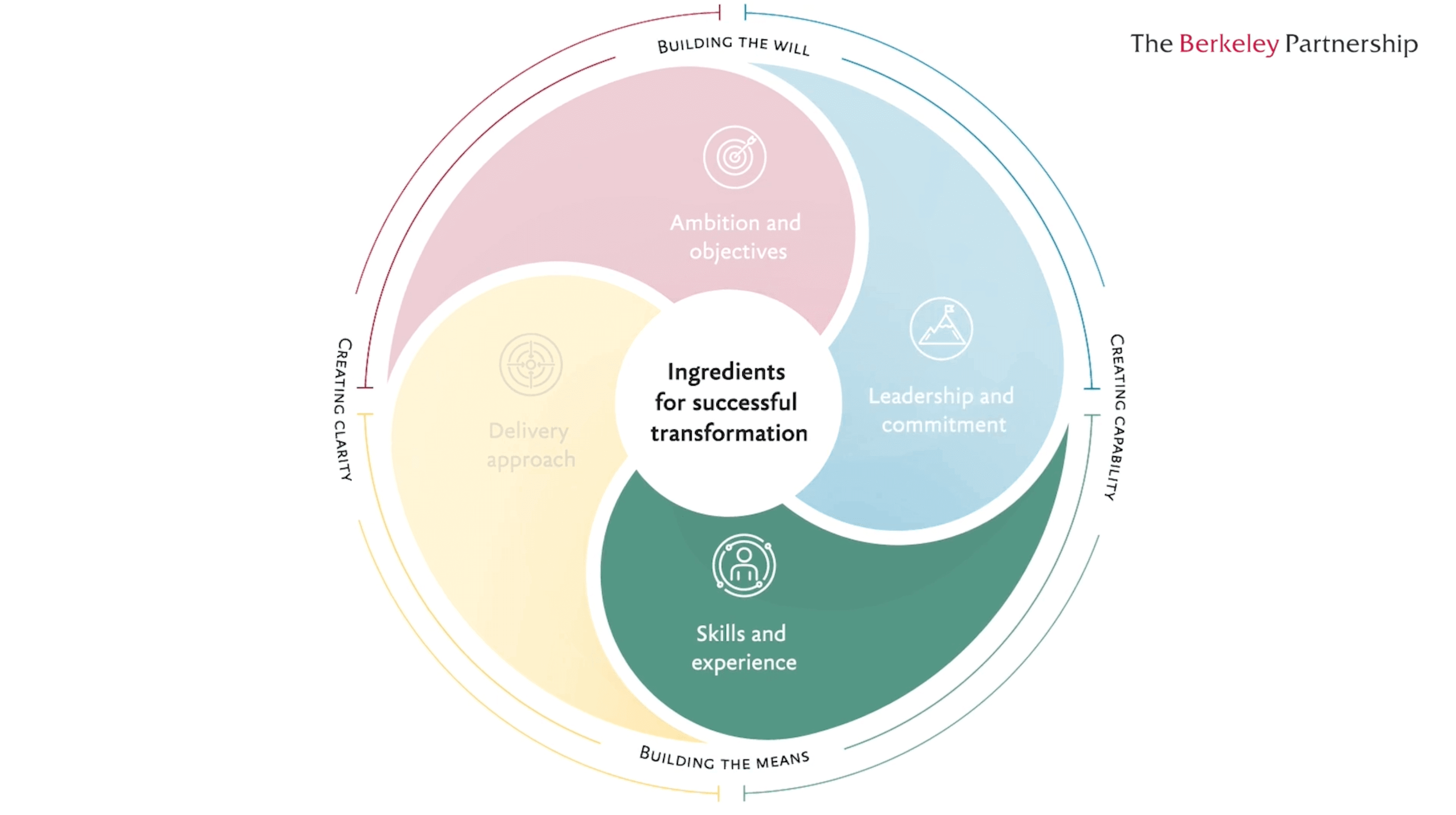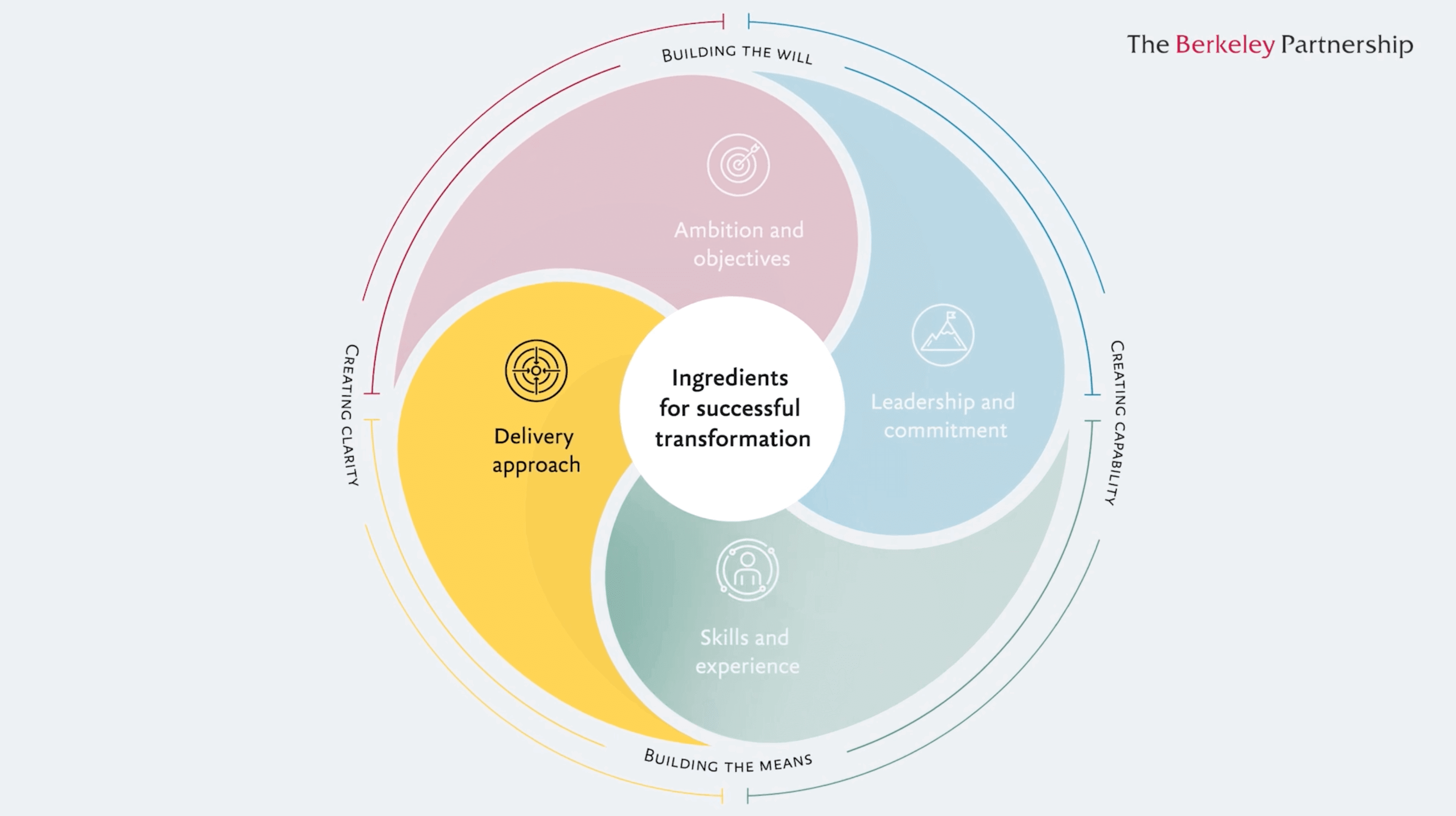Ben: Transformation is not just about doing something better. It’s really about redefining and changing how something is done. It's not easy, but the right behaviours and an integrated approach will unlock the desired outcomes. There are many factors that you need to think about when determining the right method for delivering transformation efficiently. This will depend on the work, your organisation's size and culture, and the level of change it can genuinely absorb. Getting the delivery approach right will have a multitude of benefits, including driving the right behaviours from in house-teams, and systems integrators and third-party suppliers, so you'll all be working to a common goal.
Bansri: If you're not clear on the overarching delivery method, team structure or governance, roadmap and pace, then many of the programme management basics that are critical to success, such as plans, controls, toolkits, and decision-making processes, will likely be inefficient and ineffective. Successful transformation programmes take on a holistic approach. You've got to ensure you focus on delivering the right initiatives to maximise value at the right pace.
Ben: Integration’s a key factor, but more integration isn't always better. It's about determining what's right and appropriate for the nature of the change and the initiatives in the roadmap. Methods tailored to the organisation will always work best and a key decision on many programmes is Agile versus Waterfall. Both have strengths and weaknesses, and what's right in one situation may not be suitable in others. For example, some agile techniques can work well when functional decisions can be delegated to a single empowered individual. Whereas waterfall techniques may be better when integrating a complex technology landscape with multiple stakeholder groups.
Bansri: Prioritising and pacing the programme correctly is key to delivering on time. To do that, you'd want to create an overarching roadmap that the business can and is empowered to deliver. Collaborating with business owners to shape a realistic and manageable volume of change, whilst recognising that this roadmap may evolve and stay flexible as the programme develops.
Ben: Many factors can influence the sequence of the work, such as interdependencies, the need to start riskier activities earlier, and competing business priorities. The key is to balance these to ensure the right trade-off between delivery pace and business benefits.
Bansri: Landing team structure, accountabilities and governance are critical success factors. Once you've understood your roadmap and sequencing, you can define your delivery structure and governance, specifying the skills you'll need, who will deliver them, and how to structure team accountabilities.
Ben: It's also important to right-size the delivery team, targeting a lean team structure that will deliver on outcomes and operate within governance without being unnecessarily large and thus harder to manage.
Bansri: This may include third-party suppliers or system integrators, so it's important here to establish the responsibilities upfront and in line with the agreed delivery framework, so that you get what you need whilst maintaining control.
